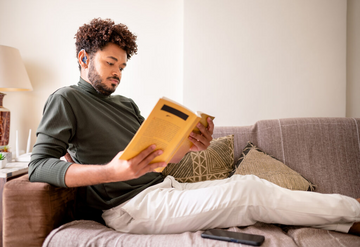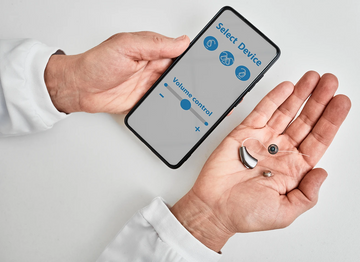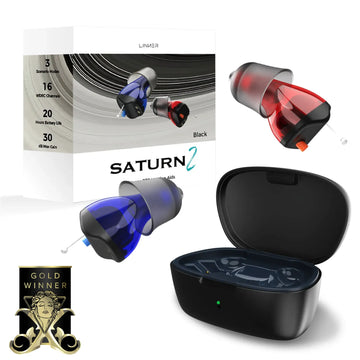The digital age changed how people meet, talk, and stay in touch. A message sent in seconds can replace what once took days. Video calls make distant relatives feel close. Social media allows friendships across continents. Yet for those with hearing loss, these tools can feel like walls rather than bridges. Accessibility gaps remain. But technology, especially hearing aids designed for digital integration, is steadily breaking these walls.

Hearing Loss in Numbers
Hearing loss is more common than many assume. According to the World Health Organization, over 430 million people worldwide have disabling hearing loss. That’s not a small number—it’s nearly one in twenty people. By 2050, the figure may rise to 700 million. Without accessibility, many of them risk social isolation. And isolation, studies show, is linked to depression, anxiety, and cognitive decline. Clearly, connection matters.
Hearing Aids as Digital Tools
Once, hearing aids were bulky and analog. They made sounds louder but not always clearer. Today’s devices, by contrast, are digital and intelligent. They link with smartphones, tablets, and computers. A call comes in, and the sound streams directly to the hearing aid. Music can be enjoyed wirelessly. A podcast plays without distortion. Accessibility has increased, and so has participation in modern life.
Social Connection Tips in Everyday Life
Building stronger social ties requires more than good technology—it requires intention. For people with hearing loss, the following small changes can make big differences:
- Choose environments wisely. A quiet café helps conversation more than a noisy bar.
- Face-to-face matters. Lip reading and facial cues are natural aids.
- Use captions. Many streaming platforms, video calls, and social apps now support real-time captions.
- Ask friends to repeat gently. Repetition doesn’t need to carry frustration; clear communication is kindness.
These are not complicated tips, but they increase accessibility for people with hearing loss by making communication less stressful.
Digital Integration and Hearing Aids
Modern hearing aids are not only sound amplifiers—they are digital companions. Some sync with fitness apps, track health, and even adjust automatically in different sound environments. Imagine walking from a quiet street into a bustling mall: the device senses the shift and adapts instantly. This automation reduces listening fatigue and improves focus during conversations.
Even more groundbreaking is compatibility with video conferencing. With remote work and online education on the rise, being able to join a Zoom or Teams call without missing critical words is a game-changer. You can go even further and use the best chatting app, like CallMeChat. It's a random chat where you can start unexpected conversations and create pleasant encounters. Accessibility no longer feels like an afterthought but a built-in right.
The Risk of Social Isolation
Without these tools, the risk of isolation looms large. A study in the Journal of Aging and Health found that older adults with untreated hearing loss were twice as likely to report loneliness compared to peers using hearing aids. Social withdrawal happens quietly. First, someone avoids group gatherings. Later, phone calls become rare. Over time, friendships weaken. But the right hearing aid, paired with digital accessibility, interrupts this spiral.
Bridging Generations
Another unexpected benefit of digital hearing aids: they bridge generational divides. Grandparents can join family video calls without missing half the conversation. Parents can help children with homework read-aloud apps. Teenagers with hearing aids can play online games with friends, talking clearly over headsets. Technology creates inclusion where silence might otherwise have stood.
Accessibility in Public Spaces
Public spaces, too, are evolving. Theaters, airports, and lecture halls now install hearing loops—systems that transmit sound directly into hearing aids equipped with telecoils. A traveler waiting for a flight can hear announcements without strain. A student in a lecture hall can follow a professor with clarity. When public and private spaces align in this way, accessibility becomes a social responsibility, not just a personal tool.
Statistics That Matter
Consider these numbers:
- People with untreated hearing loss are 24% more likely to experience social isolation.
- Using hearing aids has been shown to improve quality of life scores by up to 50%.
- A survey by the Hearing Industries Association reported that 8 in 10 hearing aid users feel their devices improved their ability to communicate in social settings.
Numbers can seem dry, but in this case, they measure real lives. They point to dinners enjoyed, friendships maintained, and family ties strengthened.
Toward a More Inclusive Future
The digital age offers both challenges and opportunities. Hearing aids today are more powerful than ever, but adoption rates are still low. Cost, stigma, and lack of awareness remain barriers. Overcoming them requires education, policy support, and community acceptance.
A society that invests in accessibility reaps more than fairness—it gains stronger networks of human connection. When people with hearing loss are empowered, they contribute their voices, talents, and perspectives. And that strengthens everyone.
Conclusion
Breaking barriers is not only about advanced hearing aid technology. It is about building a culture where accessibility is expected, not requested. It is about friends choosing quiet corners, workplaces enabling captions, and designers embedding inclusivity from the start.
Hearing aids are tools, yes. But they are also keys. Keys that unlock conversations, laughter, and belonging in a digital world that is still learning how to listen.






![Linner Mercury Clarity OTC Hearing Aids [FSA & HSA Eligible] Linner](http://www.linnerlife.com/cdn/shop/files/Linner-Mercury-Clarity-OTC-Hearing-Aids-_FSA-_-HSA-Eligible_-Linner-110038953.webp?v=1725853434&width=360)

![Linner Mars OTC Hearing Aids [FSA & HSA Eligible] Linner](http://www.linnerlife.com/cdn/shop/files/Linner-Mars-OTC-Hearing-Aids-_FSA-_-HSA-Eligible_-Linner-110039213.webp?v=1725865495&width=360)
